#the hebrides is also in scotland
Text



Travel back [...] a few hundred years to before the industrial revolution, and the wildlife of Britain and Ireland looks very different indeed.
Take orcas: while there are now less than ten left in Britain’s only permanent (and non-breeding) resident population, around 250 years ago the English [...] naturalist John Wallis gave this extraordinary account of a mass stranding of orcas on the north Northumberland coast [...]. If this record is reliable, then more orcas were stranded on this beach south of the Farne Islands on one day in 1734 than are probably ever present in British and Irish waters today. [...]
Other careful naturalists from this period observed orcas around the coasts of Cornwall, Norfolk and Suffolk. I have spent the last five years tracking down more than 10,000 records of wildlife recorded between 1529 and 1772 by naturalists, travellers, historians and antiquarians throughout Britain and Ireland, in order to reevaluate the prevalence and habits of more than 150 species [...].
In the early modern period, wolves, beavers and probably some lynxes still survived in regions of Scotland and Ireland. By this point, wolves in particular seem to have become re-imagined as monsters [...].
Elsewhere in Scotland, the now globally extinct great auk could still be found on islands in the Outer Hebrides. Looking a bit like a penguin but most closely related to the razorbill, the great auk’s vulnerability is highlighted by writer Martin Martin while mapping St Kilda in 1697 [...].
[A]nd pine martens and “Scottish” wildcats were also found in England and Wales. Fishers caught burbot and sturgeon in both rivers and at sea, [...] as well as now-scarce fishes such as the angelshark, halibut and common skate. Threatened molluscs like the freshwater pearl mussel and oyster were also far more widespread. [...]
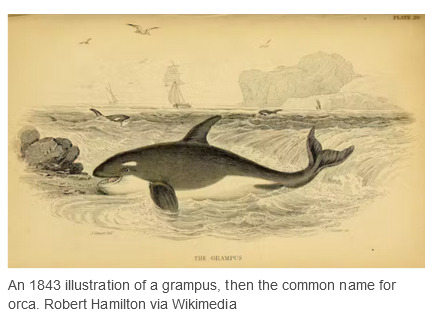
Predators such as wolves that interfered with human happiness were ruthlessly hunted. Authors such as Robert Sibbald, in his natural history of Scotland (1684), are aware and indeed pleased that several species of wolf have gone extinct:
There must be a divine kindness directed towards our homeland, because most of our animals have a use for human life. We also lack those wild and savage ones of other regions. Wolves were common once upon a time, and even bears are spoken of among the Scottish, but time extinguished the genera and they are extirpated from the island.
The wolf was of no use for food and medicine and did no service for humans, so its extinction could be celebrated as an achievement towards the creation of a more civilised world. Around 30 natural history sources written between the 16th and 18th centuries remark on the absence of the wolf from England, Wales and much of Scotland. [...]

In Pococke’s 1760 Tour of Scotland, he describes being told about a wild species of cat – which seems, incredibly, to be a lynx – still living in the old county of Kirkcudbrightshire in the south-west of Scotland. Much of Pococke’s description of this cat is tied up with its persecution, apparently including an extra cost that the fox-hunter charges for killing lynxes:
They have also a wild cat three times as big as the common cat. [...] It is said they will attack a man who would attempt to take their young one [...]. The country pays about £20 a year to a person who is obliged to come and destroy the foxes when they send to him. [...]
The capercaillie is another example of a species whose decline was correctly recognised by early modern writers. Today, this large turkey-like bird [...] is found only rarely in the north of Scotland, but 250–500 years ago it was recorded in the west of Ireland as well as a swathe of Scotland north of the central belt. [...] Charles Smith, the prolific Dublin-based author who had theorised about the decline of herring on the coast of County Down, also recorded the capercaillie in County Cork in the south of Ireland, but noted: This bird is not found in England and now rarely in Ireland, since our woods have been destroyed. [...] Despite being protected by law in Scotland from 1621 and in Ireland 90 years later, the capercaillie went extinct in both countries in the 18th century [...].
---
Images, captions, and text by: Lee Raye. “Wildlife wonders of Britain and Ireland before the industrial revolution – my research reveals all the biodiversity we’ve lost.” The Conversation. 17 July 2023. [Map by Lee Raye. Bold emphasis and some paragraph breaks/contractions added by me.]
1K notes
·
View notes
Text

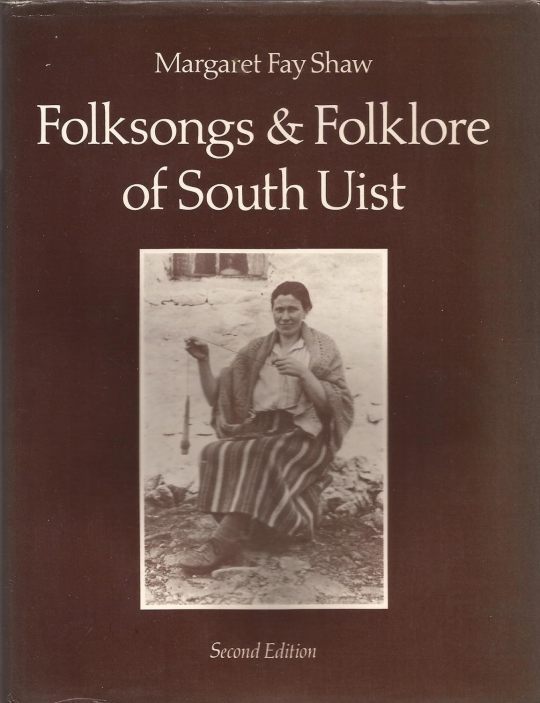


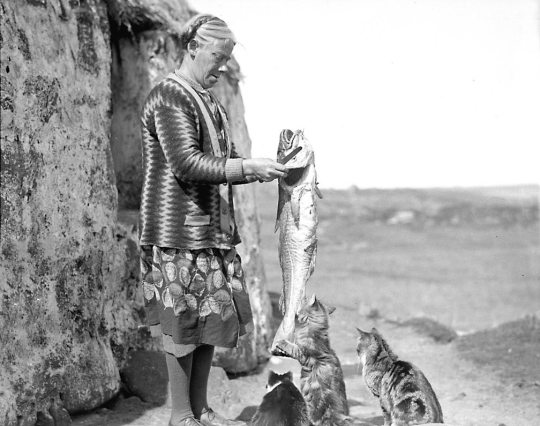


November 9th 1903 saw the birth near Pittsburgh of Margaret Fay Shaw, the American writer who did much to record the music and culture of South Uist.
Margaret Fay Shaw was one of the most notable collectors of authentic Scottish Gaelic song and traditions in the 20th century. The arrival of this young American on the island of South Uist in 1929 was the start of a deep and highly productive love affair with the language and traditions of the Gaels.
Shaw was also an outstanding photographer, and both her still pictures and cinematography contributed to an invaluable archive of island life in the 1930s. She met the folklorist John Lorne Campbell on South Uist in 1934; they married a year later and together helped to rescue vast quantities of oral tradition from oblivion.
She came of Scottish Presbyterian and liberal New England stock. The family owned a steel foundry in Pittsburgh and her parents were cultured people. Margaret was the youngest of five sisters and her early years were idyllic. Her first love was for the piano and she continued to play throughout her life.
By the age of 11, however, she was orphaned and obliged to develop the independence of character which was to lead her into a life's work far removed from her upbringing. At the age of 16, she made her first visit to Scotland at the invitation of a family friend and spent a year at school in Helensburgh, outside Glasgow, where she first heard Gaelic song.
Wanting to hear it in its "pristine" state, in 1924 she crossed the Atlantic again, this time engaging in an epic bicycle journey, which started in Oxford and ended at the Isle of Skye, where she remained for a month. It was during this trip that she began to use photography to earn a living, selling prints to newspapers, and magazines such as the Listener.
But it was not until she arrived on South Uist that she found her spiritual home. She was invited to the "big house" in Lochboisdale for dinner, and two sisters who worked there, Mairi and Peigi Macrae, were brought in to sing for the company. Margaret had never heard singing like it. For the next six years, she became their lodger and dear friend. They shared with her all of their immense stock of oral tradition which she faithfully transcribed, learning Gaelic as the work proceeded.
Her most important published work was Folksongs And Folklore Of South Uist, which has never been out of print since it was first published in full by Routledge and Kegan Paul in 1955. Not only was it a scholarly presentation of the songs and lore which she had written down during her sojourn on the island, but also an invaluable description of life in a small crofting community during the 1930s.
This classic work was undoubtedly the centrepiece of Shaw's career, though she also wrote several other books, including an autobiography, From The Alleghenies To The Hebrides.
On the neighbouring island of Barra in the early 1930s, an extraordinary social set - a kind of Bloomsbury in the Hebrides - had developed around the presence of Compton Mackenzie. One of his closest collaborators was John Lorne Campbell, who came from landed Argyllshire stock and had developed his interest in Gaelic at Oxford.
The two patricians set about producing The Book Of Barra, a collection of the island's history and traditions, to raise funds for an organisation called The Sea League, which they had established to campaign for the exclusion of trawlers from Hebridean waters.
Hearing great reports of an American woman's photography on South Uist, Campbell crossed over by ferry to seek her involvement in illustrating The Book Of Barra. He walked into the Lochboisdale Hotel one rainy evening in 1934 and found Shaw sitting at the piano; a suitably romantic initiation to a relationship which was to last for more than half a century. They married the following year and made their home on Barra until, in 1938, Campbell bought the island of Canna, where they lived for the rest of their scholarly lives. The island was given to the National Trust for Scotland in 1981, and John Lorne Campbell died in 1996.
There was nothing dry or academic, however, about Shaw. She travelled regularly to America until her late 90s. The fearsome ferry journey between Mallaig and Canna was regularly undertaken with equanimity, and she fortified herself to the end with the finest Kentucky bourbon. Her love of the Hebrides was, above all, for the values and lifestyle of the crofting people, and, particularly in South Uist in that 1930s heyday, it was deeply reciprocated. It is there that she will be laid to rest.
During her latter years she stayed at Canna House until her death at the grand old age of 101 in 2004.
96 notes
·
View notes
Text


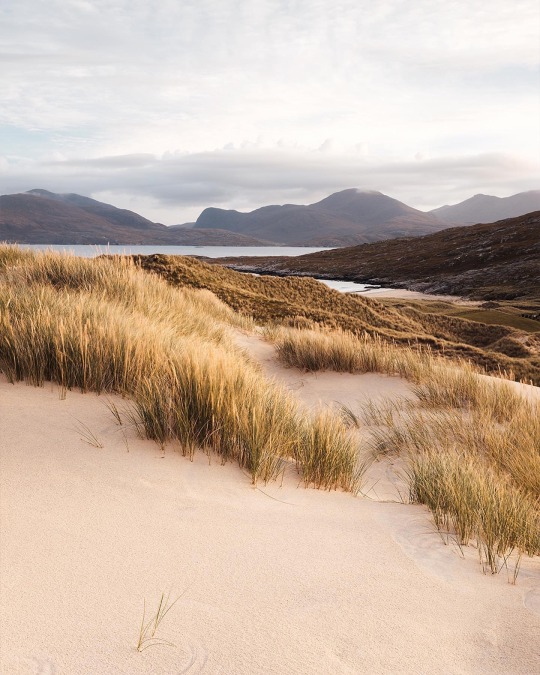





The Isle of Lewis is the northernmost island in the Outer Hebrides, located off the northwest coast of Scotland.
It is the largest island in the chain, known for its rugged coastline, stunning beaches, and ancient history.
The island is home to several prehistoric sites, including the famous Callanish Standing Stones, which date back over 5,000 years.
Visitors to the Isle of Lewis can also enjoy outdoor activities such as hiking, fishing, and bird watching, as well as exploring the island's unique culture and traditions, including the Gaelic language and the traditional art of Harris Tweed weaving.
scotland.co
📷 Nils Leonhardt
149 notes
·
View notes
Text
Scotland Headcanon Masterpost
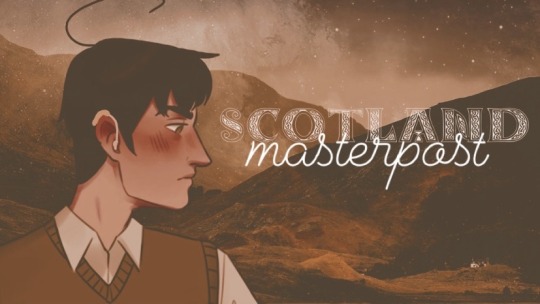
All artwork used belongs to @ifindus
I’ve been thinking about creating masterposts (inspired by @nordickies ) for a while now, I’ve always liked the idea of just having one solely thing to check where you could find out pretty much all you need to now about my personal take on different characters I talk about often. I decided to start with Scotland, as he is my brainrot atm. I also make google docs with a lot of info on my portrayals too, which you can find here. However, those really only work on desktop, and can be tricky to navigate on your phone.
My portrayals do sometimes drift away from canon, but I think my version of Scotland aligns fairly well- partially because there’s so little info on him, it’s pretty easy to just add my own headcanons on top. But also? I just like the direction Himaruya took with Scotland, I don’t try and hide my bias towards canon Scotland over the old fanon version of him. If anyone actually bothers to read all of this, I applaud you! And maybe if this one doesn’t go so terrible I might attempt to make more with other characters.
PHYSICAL
Scotland stands at 6’2 / 188cm tall, making him the tallest in his family by quite a margin.
He has a muscular body type, which scotland likes to tease is all natural, but going to the gym and having a pretty physical lifestyle definitely helps keep him in shape.
He has features that are almost intimidating. Hooded eyes, thick eyebrows, a Roman nose (but the bump is only small) and downturned lips that make him look like he’s scowling.
Scotland’s hair is a deep brown, but in the summer it can appear lighter, and some ginger undertones peak through.
His hair is pretty fast growing, whether he has a beard or not I’m still debating, but he definitely has at least a bit of stubble.
Scotland has freckles! A feature he shares with both Ireland & Northern Ireland.
The big hair curl that sits atop his head actually represents Loch Lomond, the largest loch in Scotland by surface area.
Scotland has two sideburns at the side of his head, representing both the Shetland and the Orkney islands. They originally started growing in the 1400s.
He has multiple moles/beauty spots located around his body, representing the Hebrides.
Scotland has a rather large scar sitting across the side of his neck, reaching to the back of it. A result of being beheaded during the Scottish witch trials, which also resulted in him becoming very sensitive to things touching his neck. He will instinctively fight off anything that makes contact with it, and flinch if he notices something coming too close to it.
Scotland has profound hearing loss. His hearing deteriorating happened slow and gradually at first, over the centuries and he didn’t even notice because he’d adapted to lip reading. WWI marked the most noticeable loss in his hearing, taking it from mild hearing loss to profound. It took him a while to adjust to, and even longer to truly accept, but after so many years he’s become comfortable and even proud of his disability.
PERSONALITY
Despite his intimidating appearance, Scotland is welcoming and friendly with (almost) anyone and everyone he meets.
He has a natural charisma around him, which makes him actually quite easy to befriend and talk to. This is matched up well with a witty sense of humour.
Scotland loves a joke, and he’s always willing to go along with one, even if it’s with a complete stranger, he’ll play along without a shadow of a doubt the second he picks up on it.
Scotland is not inherently aggressive, but he is very opinionated, and he has a tendency to think of things as black and white rather than nuanced. And if Scotland decides you’ve stepped out of line, he will be vocal about it.
He sees lying as inherently bad and honesty as inherently good. He will speak bluntly, and he appreciates when people speak to him with the same energy. Sugarcoating the truth might come off as fake to him, too.
He is tricky to argue with when he wants to be, Scotland can and will remove his hearing aids and/or close his eyes mid argument so he can’t hear/see what the other is saying. This drives England especially up the wall and the two continue to further butt heads.
Scotland prides himself on being a realist and down to earth. He looks at the current moment and analyses situations based on what is and not what has been or what could be, and he’s not likely to be carried away by potential positives or negatives.
He is very logistics based. He loves picking something apart to see what it’s made of to better understand it. Leading him to be very good at sciences and maths. But it also makes him pretty good at explaining things.
Stubbornness is a trait he shares with his siblings, which lends itself to his refusal to listen to someone else’s argument. Once Scotland has decided on the way something is, it can be hard to change his mind.
He has a very sharp tongue, and a natural ability to insult and hurt people. He doesn’t use this very wisely, once he’s mad he doesn’t think about what to say and when to say it. This can lead to a brutal argument over something relatively small, and once it’s all over and he’s calmed down he can then see how his words hurt. Still, he can be stubborn, and might not apologise right away.
Deep down, Scotland feels under appreciated. Especially by his brothers. He feels as though he contributes so much to the household, but he doesn’t get many thanks or anything done in return. This is rarely something he addresses.
He wears his heart on his sleeve, and you always know where you stand with him. If Scotland his happy he will smile, if he is mad he will yell, if he’s frustrated he will tell you. If Scotland dislikes something, it will be very obvious about it.
A strong desire for independence makes him desperate to prove he’s capable of handling things by himself. He’ll refuse help from others even if he may need if, he has a tendency to boast and show off the things he can do and what he’s good at. He will tell people off if he feels as though they’re not letting him handle things he’s perfectly capable of. He does not appreciate being babied.
Scotland can make a conversation about anything if asked to, even something small and silly. If you ask scotland to talk about something, he will, without question, the sillier the better. He and Ireland could sit for hours with these discussions.
Despite being loud and talkative, he has a need for the quiet, too. Noise, and having to consistently keep up with conversation, can be so extremely tiring. He needs a moment to shut off, but living with 3 brothers, it can be tricky to find those moments. This is one of the reasons he enjoys Norway’s company so much.
HOBBIES
Scotland enjoys hiking, he tries to go out every weekend. He loves exploring the nature around all of Scotland.
He plays golf, it’s mainly an excuse to get outside. Out of all the sports he enjoys, this is the one he’s the best at.
During the winter months, he likes speed skating. A hobby he used to share with Norway in the viking age, that just stuck with him.
Scotland is crazy inventive! And he loves coming up with new inventions. He loves putting the pieces together like a puzzle and watching the machine move and come to life.
He loves comedy, watching stand up comedy shows, old sitcoms and comedy panel shows.
He also happens to really enjoy crime dramas, however, he has a nasty habit of talking over the TV and sometimes might miss important plot points.
Scotland does know how to Cailidh dance, but he rarely does it apart from on specific occasions. He doesn’t enjoy practicing either, so he’ll attempt to jam all his practice into one week before he has to perform- if he needs to. Because of this, he’s definitely not as good as he maybe should be.
He does play the bagpipes, but unlike what’s depicted in canon, I think Scotland is a lot more cautious about when he plays them. Bagpipes are an outdoors instrument, so he prefers to only play and practice them outside. The only time he will play them inside is if everyone currently in the building has earplugs in.
He’s well acquainted with a pub, and out of all classic pub games, Scotland’s found himself best at snooker and pool. He’s not a master or anything, and anyone who actually plays for fun would definitely beat him, but for a total amateur he’s actually really good. Only person in his family able to beat him is Ireland.
He doesn’t mind skiing, however, he really only gets the chance to do it when he’s with Norway, in Norway, so he hasn’t really developed much skill with it at all. Out of all the sports he enjoys, this is his worst one.
Whilst Scotland doesn’t play football, he does enjoy watching it, but only specific games. He’s a Celtic fan, and really only watches if his team is playing. However, he does also enjoy watching Scotland v England games especially. He tends to get extremely competitive when watching a game.
He enjoys watching rugby Union too, and whilst he is a firm believer that Union is better than league, he’s definitely not quite as passionate about this one as he is with football.
Whilst Scotland is a realist, he does also enjoy the folktales and stories from his childhood, holding a deep love for the mythical creatures that inhabit his home. He has a little knitted nessie that was a Christmas gift from Norway, and way too many “my little pony” unicorn toys that his siblings buy to tease him- even if he doesn’t necessarily watch the show.
Scot doesn’t feel an intense need to have music in his life, but he does appreciate it. His preferred genres being more indie-rock and Scottish folk music.
He enjoys reading, his preferred genres being murder mystery and adventure books, he also much prefer to find a new series to get invested in rather than reading one-off books. With some exceptions.
Scotland loves highland cows, and he definitely has a few highland cow themed items in his house. However, he also just really loves super hairy animals in general. In his mind, the hairier the animal, the cuter it is!
Out of every national holiday, Hogmanay (Scottish New Year) is his favourite, and he likes to go all out for it. He also really appreciates and enjoys Burns night on the 25th of January, as a celebration for his culture.
Autumn is his favourite season in general! He loves wondering around different cities as the days are getting shorter and the sun is setting sooner, wrapped up warm but not too warm. Or he loves walking around in a field or in some nature, watching the orange leaves as he passes, appreciating the last few walks of the year before it’s winter and it feels too cold.
He actually really enjoys learning new languages, and he’s pretty good at it too! He likes learning both spoken and sign languages, and he loves figuring out the history of those languages and figuring out how they work and how they came to be. He speaks multiple spoken languages, but in terms of signs languages he only knows BSL, he intends to learn more.
LIFESTYLE
Scotland uses the human name Alistair MacKenzie, he’s used multiple different surnames throughout the years. He was, at one point, a Kirkland- it was England’s idea- but he changed it in the early 20th century for two reasons. One, to reclaim his culture and his language. Two, to honour his late friend that he met whilst fighting on the WWI front, who’s surname was also MacKenzie.
Scotland’s sign name is currently “inventor”, based on his hobby and how many things over the year that have actually been invented in Scotland. He wears this name like a badge of honour!
He owns a cosy, traditional Scottish stone house in the countryside surrounding the city of Stirling, with lots of garden space and some stunning scenery sounding it. This is his preferred place, and he frequently drives or takes public transport through to either Edinburgh or Glasgow.
However, because Scotland isn’t yet independent, he still has to live with England, Wales & N. Ireland to some capacity. The four of them share a house in London. It often feels cramped and crowded, so he really only spends time there when he absolutely needs to. Plus, it’s just a long travel.
He owns two pet highland cows, called Neòinean and Eilidh. They reside in the field outside his stone house. He usually asks a friendly neighbour to look after them when he has to go down to london. He loves them, they’re his best girls.
He also has a unicorn friend, who he’s names Finlay, who frequently stays in the same field as the cows. Scotland doesn’t officially take care of him, but he loves watching Finlay on his never ending quest to befriend the cows- who have no idea he’s exists.
Scotland is a very messy person, and his house is honestly a bit of a tip! Piles of clothes that have yet to be put away take up a whole chair, shelves are over stocked, there are tea stains on the coffee table because he forgot to use a coaster and hasn’t got around to cleaning it yet, random screws are left all over the floor, there are empty irn bru cans found all over the house that he’s yet to throw away.
His house is an odd combination of hyper modern and antique. An old grandfather clock sits in the same living room as a smart TV. Brand new kitchen appliances, but there’s also old furniture that’s been sitting in his house for multiple decades. He still has an old fire place, that uses real flame, rather than an electric one.
His personal taste in interiors is very much inspired by older traditional Scottish design, from the Victorian era to the early 1900s. It would feel very dated if not for the modern appliances. It’s very red, with a lot of browns and some greens spaced about. It somehow always feels dark, even with the lights on. However, it does make a cold stone house feel warmer, somehow.
Scotland eats a lot, and he does not have a well balanced diet. He eats meat upon meat upon meat, and sometimes will not eat vegetables for a few weeks at least. He also drinks far more irn bru than he probably should. He has friends that consistently tell him he needs to eat healthier, but he doesn’t really listen.
He has a tendency to leave all the windows in the house open even in the winter months, and then wonder why it’s always so cold. England has gotten tired of constantly shutting them and telling him off.
On top of this, he hates putting the heating on! He will sit there under 3 blankets, wearing a thick jumper until he finally has to admit it’s too cold and he has to turn the heating on.
Scotland does enjoy drinking, and he is a heavy weight- he can hold his beer best out of his family. He also enjoys sitting in pubs, he likes the atmosphere of a good one, sitting watching an old sports games and chatting with his mates, or making new mates there. He loves the social aspect of it.
He feels a strong and deep connection to the nature of Scotland. It’s a big part of him, he’s quick to feel homesick when he’s travelling, and if he’s away from Scotland for too long he’ll get sad and depressed. But Scottish folk music can help him feel that connection a bit more. Scotland can almost feel the rolling hills in the vibrations of Scottish folk music.
Scotland knows Scottish Gaelic, Scots, British Sign Language, English, Irish Gaelic and French fluently, he is currently learning Norwegian for Norway. He used to speak Norn, the now extinct language of the Shetland and Orkney Islands, but he started to forget it after he no longer had anyone to speak it with.
Scot is more than proud to be the representative of Scotland, and he’s very vocal about social issues! Scotland is opinionated, and he is not afraid to share those opinions, he’s known for being very vocal about Scottish Independence, disability rights and lgbt+ rights. All this to say, he’s made himself to be a person you either strongly like, or strongly dislike.
He’s a light sleeper, quite luckily. You can easily wake scotland up by shaking him, and he uses a vibrating alarm clock to wake himself up.
Scotland chooses to dress more for comfort and practicality. The weather changes so frequently in Scotland, and for most of the year he has to try and dress in a way to accommodate anything. He’s frequently seen wearing muddy and scruffy wellies, a jumper on with a simple t-shirt underneath and jeans, and sometimes he’ll wrap an extra jacket or coat around his wait just to be on the safe side. He’s learnt to not bother wearing his hearing aids outside, as they’re not waterproof and it rains so frequently in Scotland.
Scotland drinks a lot of tea, specifically Scottish soft blend, which is his personal favourite! However, that doesn’t work so well with English water, so when he’s staying in london he usually takes Yorkshire tea.
Despite how much he loves working on new inventions, he doesn’t have a separate dedicated workroom for it, so he often does his work on his living room sofa, which results in certain things easily getting lost. He complains, but he won’t empty out a spare room to fix this problem.
Because of his passion for inventing and fixing things, he’d gotten the role of the handy man in his family. He’s the one everyone calls when something is broken, and he’s generally happy with this position, but he doesn’t know how to fix everything.
Scotland is not a big fan of far travel, it takes ages and, as we know, he gets homesick so easily! However, he’s not a big fan of meetings that happen through Skype. He’s given up asking for people to turn on their cameras so he can lip read them, and usually just gets Wales or England to send him a message after summarising what was spoken about. Online meetings are just Scotland sitting bored for sometimes hours not knowing what to do.

There we go, all done I think. Honestly feel like I’ve grabbed every thought from my brain. But I love talking about this boy, he consumes my brain a lot 💕 I did want to include relationships as well, but I don’t think my thoughts about a lot of them are well developed enough yet. But if you cannot tell, I have a huge bias for ScotNor, they are canon in my mind 😌 which is why Norway is mentioned so much 😅 It wasn’t intentional.
Idk, maybe I’ll do this with more characters if I get the motivation~ ✨
48 notes
·
View notes
Photo

Scotland Fix of the Day: Finally, travel to Scotland this year is making a strong comeback. And most everybody will have Skye on their bucket list. But remember that out beyond is another realm: the Outer Hebrides. And it's loaded. Harris has incredible beaches like Luskentyre, and Lewis has both the Callanish Stones (summer solstice, anyone?) and just down the road is Carloway Broch that I caught on a misty evening. Besides missing a lot of the crowds you'll also be helping remote islands that really struggled during Covid. I'm sure some of you here have wonderful Outer Hebrides tales – and I hope you'll share them. #scotland #hebrides #lewisandharris #outerhebrides — view on Instagram https://ift.tt/1L4FuYr
318 notes
·
View notes
Text
Selkies | Scottish Folklore

Selkies are seelie court fairy that are mostly in the form of a seal, but can also shed their seal skin and become human. This “becoming human” part has lead to many stories of human men kidnapping selkie women for brides. In fact, theMacCodrum clanin the Outer Hebrides were said to be descendants of a selkie bride, which is why members of this clan were said to have skin connecting their fingers.
"In their human form, the male and female selkies were more beautiful than ordinary mortals, though they were uncouth and shapeless as seals, their beauty only showing in their large, liquid eyes. The male selkies were amorous, and used to make expeditions ashore to court mortal women, but they would never stay with them long."
A Encyclopedia of Fairies by Katharine Briggs (Published in 1976)
If I am being honest, most of the Selkie bride stories are a rather uncomfortable to read. They often have the love-stricken human man steal the seal pelt, and lock it away. In doing so, he traps the Selkie bride on land, and has no choice but to stay with him.
“Vainly she implored the restitution of her property; the man had drunk deeply of love, and was inexorable; but he offered her protection beneath his roof as his betrothed spouse. The merlady, perceiving that she must become an inhabitant of the earth, found that she could not do better than accept of the offer. “
Folk Lore and Legends of Scotland by Anonymous(1889)
As the years go on, she has children, but never stops looking longingly at the sea. In some stories, she sneaks to the beach to talk sadly with a large seal.
The stories always end with either her or the children finding her pelt. When that happens, she embraces her children one last time, then escapes to the sea.
“The large animal of the same kind with whom she had held a secret converse soon appeared, and evidently congratulated her, in the most tender manner, on her escape. But before she dived to unknown depths, she cast a parting glance at the wretched Shetlander, whose despairing looks excited in her breast a few transient feelings of commiseration. “Farewell!” said she to him, “and may all good attend you. I loved you very well when I resided upon earth, but I always loved my first husband much better.”
Folk Lore and Legends of Scotland by Anonymous(1889)
Which may not be a surprise, seeing as he did kidnap her.
There are other sad stores, such as the one where a mermaid sacrifices herself to fishermen in order get a selkie his pelt back, and in doing so saves his life.
But there are stories that end on a happier note. In one, a man who is seal hunting stabs a seelkie, gravely injuring it. That selkies son comes to land, turns the human man into a seal, and brings him to their home. There, the selkies son explains that only the human who used the knife can heal the wound on his injured father. The human man does, and is allowed free, back as human. He never hunts seals again.
#FairyTypes#ScottishFolklore#Scottish Folklore#Folklore#sidhe#sith#scottish#myths#mythology#folktales#fairies#selkies#WaterTypeFairies
99 notes
·
View notes
Note
Fun fact please?
Today You Learned about Shion/Shony.
[Wikipedia’s article is under ‘Seonaidh’, but I read about it under the name ‘Shion’ in Mark Williams’s book.]
So, in the early 1700’s book A Description of the Western Islands of Scotland by Martin Martin (yes, that is his name) describes an annual nighttime ritual on the Isle of Lewis, in the Hebrides, in which the local church community would get together, pick someone to hold a cup of ale, and then wade into the water and dump it in while declaring it an offering to Shion or Shony to have a prosperous harvest. Now Marty-Mart thought that this was a holdover from an old pagan religion. It was popularly believed by scholars that ‘Shion’ must have been some old Celtic deity of the sea, whose cult was long forgotten, but that this one little island off the coast of Scotland remembered, if only for this one little holiday. Wikipedia even calls this ‘likely’, though it doesn’t have a citation for that sentence.
Welp. Probably not, according to Mark Williams.
In his book Ireland’s Immortals, Mark Williams talks about Marty-Mart’s records, and his own research. He also brings up that acclaimed scholar Ronald Hutton (famous debunker of New Age nonsense) independently came to the same conclusion, and that is this: this probably isn’t a pre-Christian ritual that survived. This is probably a pre-Reformation ritual that survived. After all, ‘Seonaidh’ is close to the Scottish Gaelic form of ‘Johnny’, in the same way that ‘Sean’ is the Irish take on ‘John’. Williams suggests that, given there are a ton of weird little festivals for saints all over the world, and the prominence of water, this is probably a ritual feast celebration to Saint John the Baptist, and it somehow survived the Reformation in this remote corner of Scotland.
A bit weird, but I hope it’s a good Fun Fact.
#Fun Fact Friday#Today You Learned#Isle of Lewis#Shion#mythology#Mark Williams#Ronald Hutton#Scotland#Hebrides#Saint John the Baptist#religion#New Age
12 notes
·
View notes
Note
Lost my voice at the Northern California Renaissance Faire yesterday, I was seated in the “Scotland” section of the bleachers for the joust and we boo’d and yelled and cheered louder than the rest, we shook the stands when we stomped and only stopped booing France when they teamed up with our Scottish knight to beat up England and Spain; France then stabbed our knight in the back and his squire, who was also the only woman, stepped up to the French knight to avenge him and after being backhanded and having her horse stolen she took the French horse and dealt the Frog a deadly blow, making her the winner of the entire tournament.
Also, the stands at either end of the arena were unclaimed but they kept cheering with us so my group decided they were the outer Hebrides 💙
Whenever I hear about renaissance faires I always picture the start of a Knight's Tale. Sounds like you had fun - but don't get so into it you start calling French people 'frogs'.
102 notes
·
View notes
Text

Artist: Alexander HutchisonScottish (1840 - 1924)
Title: St Kilda
Date created: About 1890
Materials:
Albumen print
Often described as the most remote part of the British Isles, St Kilda is an archipelago that lies some forty miles west of the Outer Hebrides in the North Atlantic Ocean. Across several centuries the inhabitants of St Kilda lived mainly in isolation and self-sufficiency, harvesting the land and the abundant seabird population. The growth of tourism in the Victorian era brought increasing contact with the mainland with summer cruise steamers arriving regularly from the 1870s onwards. For those visitors who braved the often perilous landing on St Kilda, the seemingly primitive way of life of a tiny community at the very margins of their country and society would have aroused great curiosity.
This photograph was probably taken around 1890, by which time the St Kildans would have been used to the annual summer intrusions and were presumably also accustomed to posing for photographs. Hutchison’s photograph gathers a sizeable proportion of the 100 or so inhabitants, with two outsiders – one male, one female – also shown in the group. The islanders are shown close to their village against the backdrop of a hillside dotted with cleits, the small stone constructions roofed with turf that were used for storing food and peat. The gaunt, pinched faces of the women attest to the harsh conditions of life on the island. Hutchison’s photograph is an intriguing record of an encounter between two different worlds and a record of a way of life that was increasingly under threat. By the end of the century, the combined impact of emigration, disease and hardship had led to a dwindling population, and in 1930 the remaining thirty-six inhabitants were evacuated from St Kilda at their own request.
National Galleries of Scotland
30 notes
·
View notes
Text
28th September
Michaelmas Eve

Source: onepeterfive.com
Today is Michaelmas Eve, which had a considerable set of customs to honour the Archangel Michael, the day before his feast day. As so often with the Christian saints, a merging with the pagan past can be detected. Michael was frequently conflated with the pre-Christian sea gods. In the Hebrides, the Archangel was revered as the patron saint of the sea. A dish called Straun Micheil was baked in his honour on this day consisting of locally grown post-harvest produce together with butter, eggs, and sheep’s milk. It was cooked in a lamb’s skin over an open fire, the echoes of pagan animal sacrifice being positively audible. The cakes were were marked with a cross before being eaten, with a slice tossed on the fire to pacify the devil/sea god. Dances also took place on Michaelmas Eve, anticipating the mummers’ plays of the Christmas season, but the death-and-resurrection theme featured, unusually, a woman, perhaps a further memory of the ancient Mother Goddess-worshipping religions once widely practiced.
In the Highlands of Scotland, the saint was often known as God Michael, whereas in Lincolnshire bonfires were lit in his honour, and seed scattered for the birds, a gesture believed to bring good luck.
#st michael#archangels#michaelmas#Michaelmas eve#pagan religion#british folklore#straun micheil#bonfires#god michael
10 notes
·
View notes
Text

Travel back [...] a few hundred years to before the industrial revolution, and the wildlife of Britain and Ireland looks very different [...]. [B]etween 1529 and 1772 [...] [i]n the early modern period, wolves, beavers and probably some lynxes still survived in regions of Scotland and Ireland. [...] [T]he now globally extinct great auk could still be found on islands in the Outer Hebrides. [...] [A]nd pine martens and “Scottish” wildcats were also found in England and Wales. [...] [B]urbot and sturgeon in both rivers and at sea [...] [and] threatened molluscs like the freshwater pearl mussel and oyster were also far more widespread. [...] [S]everal species of wolf have gone extinct [...]. The capercaillie is [...] [t]oday [...] found only rarely in the north of Scotland, but 250-500 years ago it was recorded in the west of Ireland [...]. [B]y the end of the 18th century, sea eagles were essentially extinct across England and Wales. [...]
The Powte’s Complaint is a protest ballad probably written in 1619 to bewail the drainage of the Fens around Ely and Wisbech in Cambridgeshire.
Attributed in one manuscript to a “Peny” of Wisbech, it is written from the perspective of a burbot, a freshwater species of cod commonly found in the Fens at this time. (This fish is now nationally extinct, but may be soon be reintroduced.)
The ballad summons the “brethren of the water” – probably meaning local people as well as fish and other animals – to fight against the drainage scheme, which sought to create new pasture land:
Come, Brethren of the water, and let us all assemble,
To treat upon this matter, which makes us quake and tremble;
For we shall rue it if ’t be true that Fenns be undertaken,
And where we feed in Fen and Reed, they’ll feed both Beef and Bacon.
According to research by Todd Borlik and Clare Egan, the subject of complaint here was a plan to cut a canal through an area of common land south of Haddenham. This scheme would remove the ability of local people to catch fish, and also to transport their produce and fuel on the water. Protests against the scheme apparently culminated in a demonstration of some 2,000 people who lit bonfires, banged on drums and fired guns all night during a meeting of the Commission of Sewers in 1619.
Within the poem, the alliance of the “brethren of the water” seems to recognise the interdependence of humans and wildlife on each other, and on the environment of the Fens.
A comparable example [...] is the Welsh poem Coed Marchan (Marchan Wood), written around 1580 by Robin Clidro, a wandering poet from the Vale of Clwyd in Denbighshire, known for his humorous rhymes.
Clidro’s poem tells the story of a group of red squirrels who go to London to present a petition against the felling of Marchan Wood for charcoal. As with The Powte’s Complaint, the use of the squirrel as narrator is a conceit, and the poem is really a protest against deforestation on behalf of human interests. But again, the author re-imagines the world from the perspective of animals:
Odious and hard is the law, and painful to little squirrels. They go the whole way to London, with their cry and their matron before them. Then on her oath she said, “All Rhuthyn’s woods are ravaged; my house and barn were taken one dark night, and my store of nuts.” The squirrels all are calling for the trees; they fear the dog.
---
Image, caption, and text by: Lee Raye. “Wildlife wonders of Britain and Ireland before the industrial revolution – my research reveals all the biodiversity we’ve lost.” The Conversation. 17 July 2023. [Bold emphasis and some paragraph breaks/contractions added by me.]
56 notes
·
View notes
Text

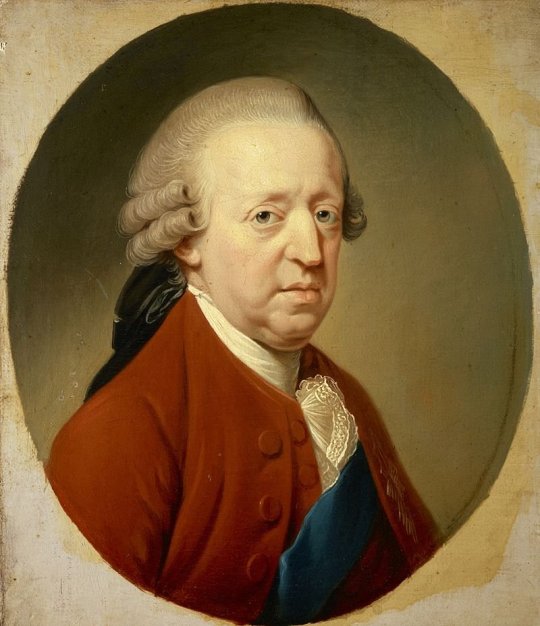
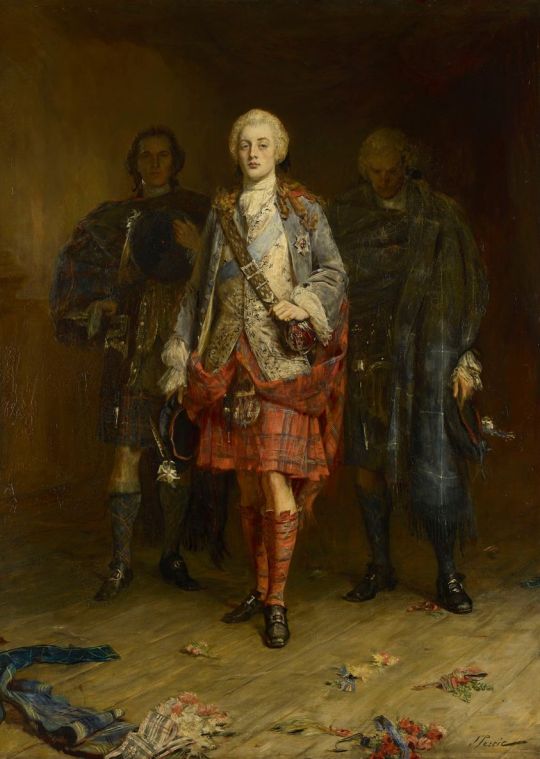
Charles Edward Stewart was born in Palazzo Muti, Rome, Italy, on 31 December 1720, where his father had been given a residence by Pope Clement XI.
I think I have covered enough of Charlies exploits in Scotland during the '45 so today I have just put together a wee bit background up to the time he started getting involved in what he seen as his birthright.
His father, James Francis Edward Stuart, had been brought to Rome as an infant when his deposed father, James VII, received Papal support after fleeing London in 1689. James Francis married Maria Clementina, a Polish princess with a large inheritance, in 1719. After the failures of the second and third Jacobite Risings in Scotland at the beginning of the 18th century, the birth of a Stuart heir was heartening to the Jacobite cause.
Charles was charismatic and sociable from a young age, characteristics that would later compensate for his lack of skill in battle. As a royal heir, he was privileged and well educated, particularly in the arts. He spoke several languages, including enough Gaelic, although those who want to detract from this intelligent young man will tell you couldn't even speak English, this is so untrue, it is also said he could play the bagpipes.
As the son of the claimant and heir apparent to the throne of Great Britain, Charles was raised to believe in his divine right to an absolute monarchy, It was his life’s purpose to ascend to the throne of Scotland, Ireland, and England, and it was this belief that ultimately lead to the so-called Young Pretender’s defeat, as his desire to capture London after securing Edinburgh exhausted his dwindling troops and supplies in the winter of 1745.
In order to reclaim the throne, James and Charles needed support from a powerful ally. After the death of Louis XIV in 1715, France revoked its support of the Jacobite cause for a time but in 1743 they decided to send an invading force to Britain, led by ´the Young Pretender´, as his enemies called him. The scheme fell through due to stormy weather. The Prince decided to go ahead without French assistance, and he set out for Scotland with only a handful of companions, landing in the Outer Hebrides in July 1745.
20 notes
·
View notes
Text

On this day:
MERMAID SIGHTINGS
On January 12, 1809, northeast Scotland, a voluptuous mermaid frolicked in the waves while two women watched from shore. They noted her habit of reaching a delicate arm above the water to toss back her long green tresses.
Their report of the mermaid prompted another man to relay his experience along the same beach at Sandside. Twelve years earlier, schoolmaster William Munro was startled at the sight of an apparently nude woman, sitting on a rock while combing out her luscious brown hair. She had a plump face, rosy cheeks, blue eyes, and a torso like that of a full-grown woman. Four minutes passed before the mermaid dove into the sea. Munro had heard others speak of the phenomenon, but was skeptical until he saw it for himself.
In 1814 a boy observed a half woman, half fish off Scotland's west coast, but was mocked after telling others what he'd seen. The next month his friends also saw her, at first thinking she was a drowning woman, but then noticing her large fish tail. They fetched some farmers, and one arrived with a rifle, which he didn't use. Instead he whistled at the mermaid, who turned to face him. She then stayed by the shore for a couple of hours, watching and hissing at the group.
In the Hebrides, in the 1830s, a small mermaid was playing in the water when a boy hit her with a rock. Her body washed ashore a few miles away, where it was noted that her lower half was like a salmon tail, but without the scales. Local folk buried her.
Text from: Almanac of the Infamous, the Incredible, and the Ignored by Juanita Rose Violins, published by Weiser Books, 2009
5 notes
·
View notes
Text
Pobull Fhinn | Outer Hebrides, Scotland
Pobull Fhinn | Outer Hebrides, Scotland
Pobull Fhinn is a stone circle on the Isle of North Uist in the Outer Hebrides. The modern standard spelling would be “Poball Fhinn” – Fionn’s people.
The stones were probably named after the legendary hero Fionn mac Cumhaill. The stones are also known as “Sòrnach Coir’ Fhinn,” or “the fireplace of Fionn’s cauldron” and locally as “Sòrnach a’ Phobaill” (the fireplace of the People). The former…
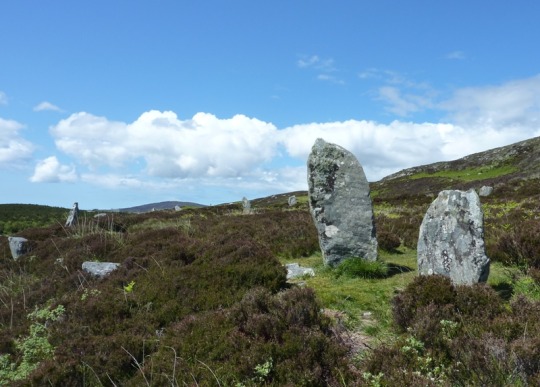
View On WordPress
#Ben Langass#Celtic Mythology#Finn&039;s People#Fionn Mac Cumhaill#Fireplace of Fionn&039;s cauldron#Isle of North Uist#Outer Hebrides#Pobull Finn#Sòrnach a&039; Phobaill#Sòrnach Coir&039; Fhinn#Scotland
90 notes
·
View notes
Note
I'm wondering if I should take a (small) trip to somewhere in the UK during the term break... any recs?
When I was at Oxford, I likewise took advantage of those six-week breaks to do quite a bit of traveling, including a two-week trip to Scotland which I did on an extremely minimal budget and with everything I needed in one backpack. Please keep in mind that this was 2009 (I am. Old), and therefore almost fifteen years ago.
This itinerary included, more or less in this order, and with numerous day/side trips:
Edinburgh
Inverness
Isle of Lewis (in the Hebrides)
Isle of Skye
Glencoe
Glasgow
You can pick and choose depending on whether you want to see more cities, cultural sites, wilderness, etc. It might also depend on whether you can get around, as train strikes and other ongoing service disruptions can make it a headache to travel entirely by public transport. I don't know if they still have it, but I was able to buy a travel card for Scotland that covered almost all of my public-transit fares on train, bus, and ferry (that thing was worth its weight in gold). It is at least worth looking into some kind of weekly pass or seeing if there are discount travel options.
Likewise, I went up in the age before Airbnb, so I had to book regular B&Bs, which were generally affordable and run by nice people (one of them helpfully mailed my camera back to me after I accidentally left it in her room, and because once again, I am unbelievably old, I had to put cash in the post rather than just using PayPal to reimburse her for it). You will have more options, depending on how long you stay and where you want to go, but the nice thing about Scotland is that it is (well, usually) less expensive than England, and the North in general is cheaper.
If you don't want to go all the way to Scotland, I do recommend the North of England, which is gorgeous, huge, and empty. Northumbria, the Yorkshire Dales, Carlisle, Cumbria, Lindisfarne, Alnwick, etc are all doable by train from Oxford (once again, presuming that the train is uh, running), though it will take several hours and you will have to change services at least once. The Lake District is obviously gorgeous, though likewise touristy and more expensive at any time of year. That again will be somewhere to go if you feel like going out and hiking and enjoying the scenery, which may or may not be your bag. York is also lovely, if you haven't been there, and always worth a visit.
Wherever you go, make sure that you book train tickets in advance (as you've doubtless already learned that they scalp you on day-of) and check timetables. For example (though they may now offer it) when I went, some of the outlying Scottish isles/Hebrides did not have ferry service on Sundays, so if your itinerary relies on that, you might find yourself unavoidably delayed.
Have fun!!!
23 notes
·
View notes
Text


July 14, 2023
Johnston faces allegations that he repeatedly assaulted his wife at their home in the Inner Hebrides, culminating in him attempting to strangle her. The charges, between April 2019 and March 2022, include pushing his wife against a wall, shouting at her and throttling her, and threatening to kill her and brandishing a knife towards her.
The Times and other outlets reported that he is also alleged to have attempted to enter a vehicle his wife was in and striking her through an open window, and allegedly placing her in a headlock and dragging her from a pub after she refused to leave with him. Further charges claim Johnston isolated his wife from her friends and monitored her movements and her finances.
I sometimes forget that domestic violence is more about power and control over someone than anything else. My first thought is always, "you must hate someone to treat them this way, so why not leave them?". But that is absolutely not the emotion driving the violence these people inflict on their partners.
11 notes
·
View notes